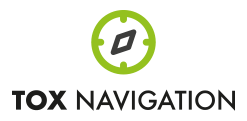Innovative solutions for enhancing chemical safety assessment
Aug 21
I'm thrilled to highlight two ground-breaking papers that are shaping the future of chemical safety assessment in and beyond the European Union:
Both papers present a way to address one of the major challenge of chemical safety assessment that is the sheer scale of the assessment exercise: a new classification scheme designed to lead to the same levels of protection, without necessarily aiming to predict adverse effects in animal studies. The new classification scheme will rank chemicals into three levels of concern (high, medium and low) based on toxicodynamic (TD) and toxicokinetic (TK) considerations.
Both papers present a way to address one of the major challenge of chemical safety assessment that is the sheer scale of the assessment exercise: a new classification scheme designed to lead to the same levels of protection, without necessarily aiming to predict adverse effects in animal studies. The new classification scheme will rank chemicals into three levels of concern (high, medium and low) based on toxicodynamic (TD) and toxicokinetic (TK) considerations.
"Towards a Future Regulatory Framework for Chemicals in the EU – Chemicals 2.0"
Berggren, E.; Worth, A. P.
Regulatory Toxicology and Pharmacology 2023, 142, 105431.
https://doi.org/10.1016/j.yrtph.2023.105431
The paper discusses the evolution of EU chemicals legislation since the 1960s, highlighting its growing complexity and the need for simplification and streamlining. It introduces the concept of "Chemicals 2.0," a future safety assessment and management approach based on New Approach Methodologies (NAMs), mechanistic reasoning, and cost-benefit considerations. Chemicals 2.0 aims to be more efficient, effective, and in line with the EU's goal to replace animal testing. The paper proposes five design criteria for Chemicals 2.0 and emphasizes the use of NAMs to classify chemicals based on their potential harm while maintaining or improving protection levels for human health and the environment.
"A Framework for Chemical Safety Assessment Incorporating New Approach Methodologies within REACH"
Ball, N.; Bars, R.; Botham, P. A.; Cuciureanu, A.; Cronin, M. T. D.; Doe, J. E.; Dudzina, T.; Gant, T. W.; Leist, M.; van Ravenzwaay, B.
Arch Toxicol 2022, 96 (3), 743–766.
https://doi.org/10.1007/s00204-021-03215-9
There's growing global interest in new approach methodologies (NAMs) for chemical safety assessment, including in silico, in vitro, and targeted in vivo data sources. However, the adoption of these methods for regulatory purposes has been slow. To address this, a framework has been developed, aligning with the requirements of REACH, that uses a tiered approach to evaluate both hazard and exposure. The framework yields classification categories, safe doses, and risk assessments at each tier, with progression dependent on the results from previous tiers. Three examples demonstrate that the framework's outputs are equivalent or even more cautious than traditional methods. This approach allows for a transparent and gradual integration of NAMs into chemical safety assessment, enabling science-based decisions that maintain or improve public health protection while reducing the use of animals, time, and resources. Additionally, it supports the incorporation of new methods as they evolve, emphasizing continuous improvement over periodic overhauls.
Long TXT

-
158 Bridge Road, East Molesey,
United Kingdom KT8 9HW -
info@toxnavigation.com
-
+44 7485 189099

